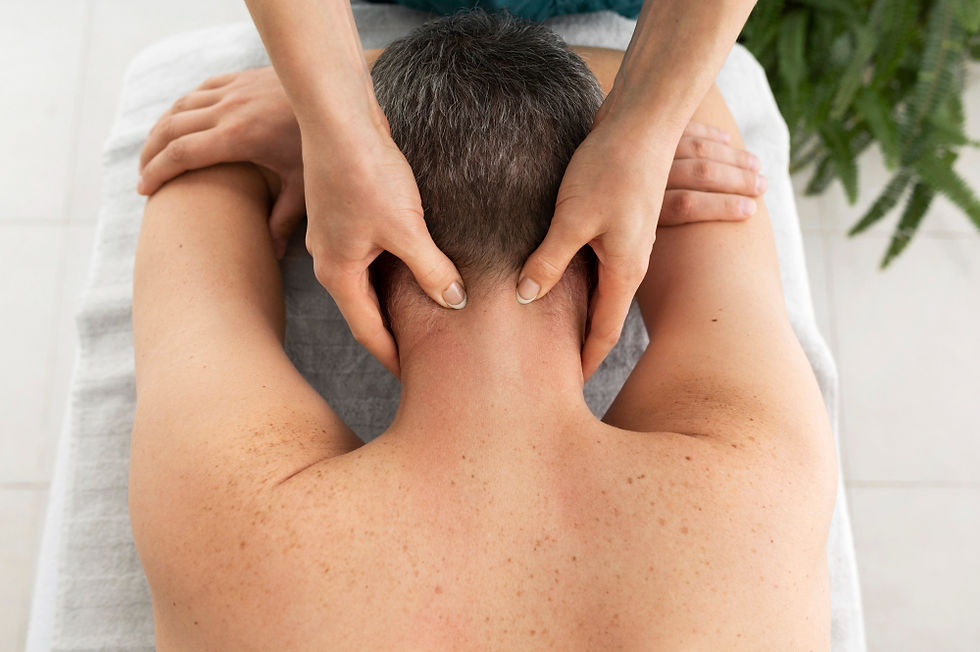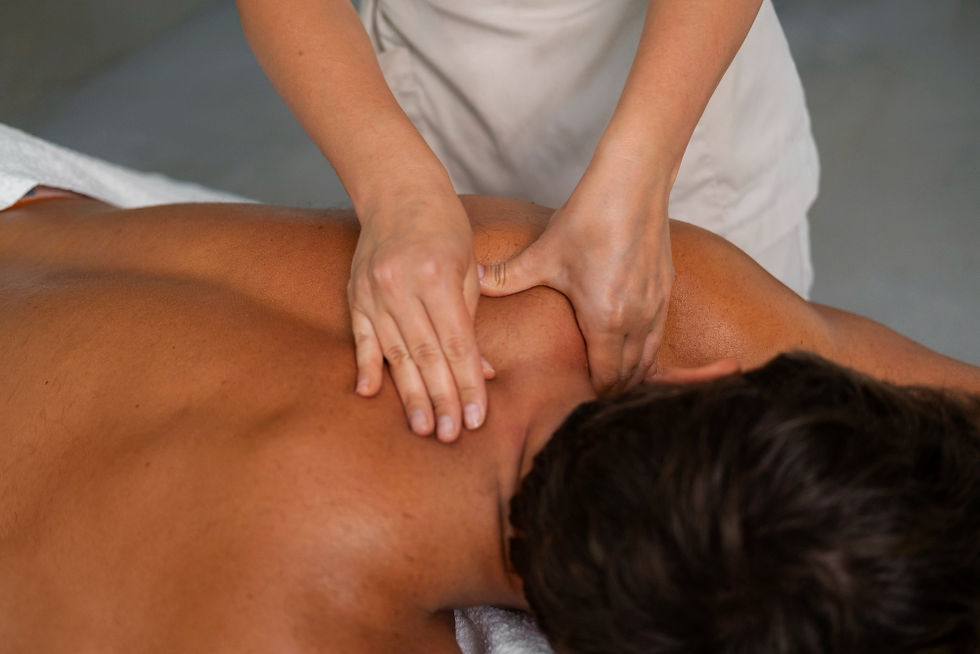How to Care for Your Body After a Deep Tissue Massage?
- laurenlill175
- Jul 1
- 3 min read
A deep tissue massage will leave you feeling calm, refreshed, and lighter physically. But good aftercare is just as important as the massage itself in order to enable your body to reap the full benefits of the session. So, what does a deep tissue massage do, one may ask? Essentially, it works on the deeper layers of connective tissues and muscles to relieve chronic pain, break down scar tissue, and improve blood flow. However, because it impacts on such a deep level, your body needs time and good care to recover and maximize its benefits.
In this blog here, we will talk about the best aftercare techniques to help your body recover and maximize the effects of your massage therapy.

Why Aftercare Matters?
Deep tissue massage isn't a relaxing experience—it's therapy. Temporary soreness, increased toxin release, and dehydration are possible side effects if you don't manage them. Knowing how to care for your body post-massage makes you avoid discomfort, injury, and the long-term benefits of your therapy.
Key Aftercare Instructions to Be Aware of After a Deep Tissue Massage
1. Stay Hydrated
Drinking water is necessary after a deep tissue massage. Circulation is stimulated by the massage and enables the release of toxins in muscle tissues. Fluids enable your body to flush out such toxins.
Drink at least 8–10 glasses of water throughout the day
Avoid drinking alcohol and caffeine that will cause your body to dehydrate
Add electrolytes if you feel extremely tired
2. Take It Easy
Following your massage, allow your body to rest as it needs to. Avoid strenuous activities like running, weightlifting, or high-intensity exercise for a minimum of 24 hours.
Select light walking or stretching.
Allow your muscles to heal.
Rest and ease of movement first.
3. Apply Heat or Cold If Needed
Some soreness or inflammation may occur after the massage, most commonly following a deep tissue massage. You may use ice packs or a warm compress as necessary.
Use cold for swelling or inflammation reduction.
Use heat for sore or stiff muscles relief.
Apply in 15–20 minute intervals.
4. Eat a Light, Balanced Meal
Feed your body healing foods that support muscle recovery.
Add lean protein, leafy greens, and whole grains.
Avoid greasy, processed, or heavy foods.
Include anti-inflammatory spices like ginger or turmeric.
5. Gently Stretch
Gently stretch to maintain your muscles' flexibility and your body from stiffening after the massage.
Massaged areas targeted during the massage.
Use slow, controlled movements.
Do not overstretch in order not to strain.
6. Sleep Adequately
Sleep is when your body does its most recharging. You might feel a little sleepier than usual afterward from a deep tissue massage. It's alright—your body is doing some behind-the-scenes work.
Strive for at least 7–9 hours of good sleep.
Create a calm, serene sleeping space.
Try relaxing activities before sleep like meditation or slow breathing.
What Not to Do After a Deep Tissue Massage?
Missing Hydrating – Can lead to fatigue and muscle stiffness.
Strenuous Exercise – May tax muscles still recovering.
Heavy Meals or Alcohol – Can interfere with detox and make you sluggish.
Ignoring Soreness – Minor soreness is normal, but persistent pain can mandate follow-up.
Wrapping Up
Understanding what does a deep tissue massage do makes you appreciate the importance of proper aftercare. The massage works down into your muscle and releases tension, loosens things up, and strengthens circulation. But if these are going to remain, your body requires time, support, and the right after-session care.
By doing all these simple things, you can extend the effects of your massage and keep your body in great condition. Regardless of whether you are using deep tissue therapy to end chronic pain, stress, or physical rehab, how you take care of your body afterwards is just as significant as the treatment itself.








Comments